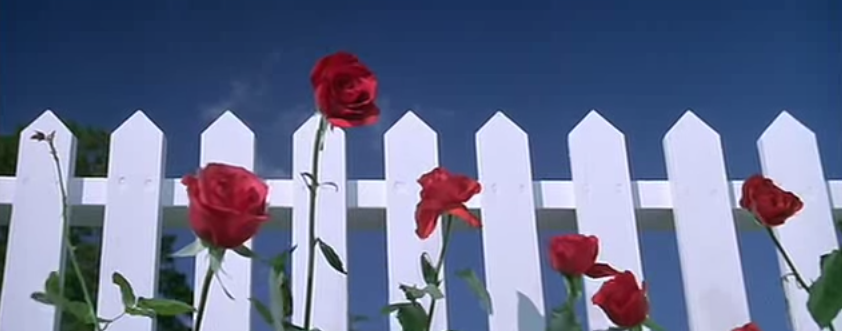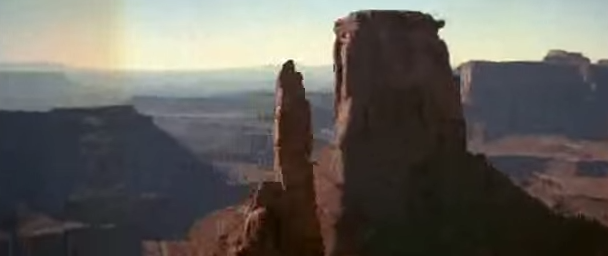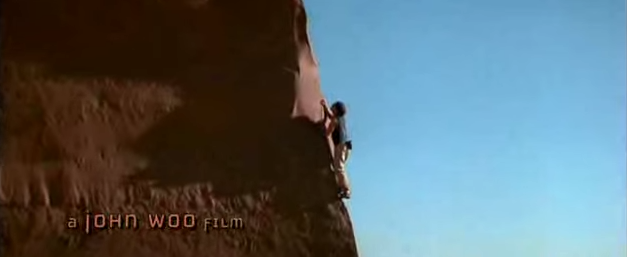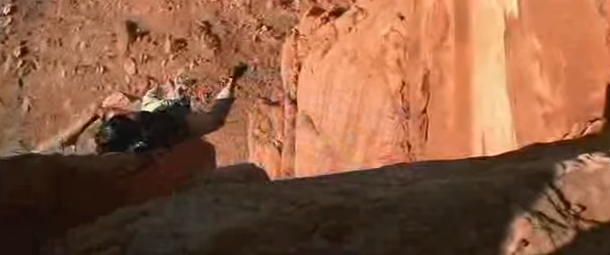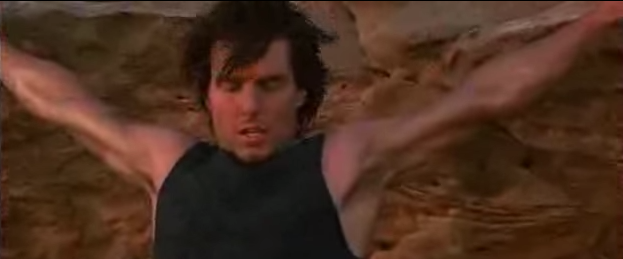Friday, 19 December 2014
Storyboard
This is the original storyboard. Though we have along its lines, various changes have been made in the final cut of our film.
Monday, 15 December 2014
Conventions of Horror Films
In the Horror genre there are many different conventions which are common in films from The Hammer Horror Dracula to more recent films such as the Saw franchise. These conventions have changed very little if not unchanged at all. Many of these conventions are very simple and easy to reproduce.
One convention is the use of a forest like area as a setting. This is used in films such as Cabin in the Woods and Blair Witch Project. This sort of setting creates an isolated feeling of
One convention is the use of a forest like area as a setting. This is used in films such as Cabin in the Woods and Blair Witch Project. This sort of setting creates an isolated feeling of
Tuesday, 2 December 2014
December feedback
Your blog posts are limited and need to be improved.
Research your target audience and apply theories.
PLanning needs to be made clear on your web-log.
Storyboards, role allocation, production schedule. Ensure that these are thorough and detailed.
You are making steady progress with your edit. You now need to put the edit together and think about continuity.
Keep exploring the codes and conventions of the genre and reproduce these in your narrative.
Manage your time to hit the Christmas deadline.
Research your target audience and apply theories.
PLanning needs to be made clear on your web-log.
Storyboards, role allocation, production schedule. Ensure that these are thorough and detailed.
You are making steady progress with your edit. You now need to put the edit together and think about continuity.
Keep exploring the codes and conventions of the genre and reproduce these in your narrative.
Manage your time to hit the Christmas deadline.
Friday, 28 November 2014
Audiences
Audiences are identified for what they are watching, and why, this is known as uses are gratification theory. This looks at the idea that people watch different media texts for certain gratifications. An example of this is people watching horror films to be thrilled, as an example.
Audiences can receive media in different ways, and according to Stewart Hall's Coding Theory, there are four categories :
Preferred Reading: How the media is intended to be seen
Opposite Reading: Opposite to what it intended to be seen as
Negotiated Reading: That it is understood how it is intended to be seen, but is not agreed with
Aberrant Reading: When there is no understanding of how it is suppose to be seen
In this day and age, this is heavily applied to adverts, who often produced surprisingly simple adverts which often do viral. It is more likely entertaining adverts go viral. And example of this is a T mobile advert which was launched during the Royal wedding in 2012. The advert was satirizing the royal wedding. This gathered a lot of attention as people found it amusing and it rapidly became viral. However, there was a small minority of people who mistook the advert as real. This shows that media such as adverts have great sway over people
Audiences are generally categorized into different stereotypes for the purpose of marketing and generalization. One stereotype that has emerged in the past 20 years has been metrosexuality which over time has become more and more normally for the average person to pursue. During the time it first emerged, it was parodied in various forms of media.
Applied to horror films, audiences are great and varied, are there are many different types of horror, such as Hammer Horror, as an example. The opening sequence I am producing is a more modern take on horror, it being more mysterious than more straight to the point horror films such as Friday the 13th. The sequence we have produced however is aimed at a similar if not slightly older audience, as it does not flow completely as a traditional horror would do. However it does keep the convention of that there is often a murder in the beginning of the film, such as in Halloween.
Audiences can receive media in different ways, and according to Stewart Hall's Coding Theory, there are four categories :
Preferred Reading: How the media is intended to be seen
Opposite Reading: Opposite to what it intended to be seen as
Negotiated Reading: That it is understood how it is intended to be seen, but is not agreed with
Aberrant Reading: When there is no understanding of how it is suppose to be seen
In this day and age, this is heavily applied to adverts, who often produced surprisingly simple adverts which often do viral. It is more likely entertaining adverts go viral. And example of this is a T mobile advert which was launched during the Royal wedding in 2012. The advert was satirizing the royal wedding. This gathered a lot of attention as people found it amusing and it rapidly became viral. However, there was a small minority of people who mistook the advert as real. This shows that media such as adverts have great sway over people
Audiences are generally categorized into different stereotypes for the purpose of marketing and generalization. One stereotype that has emerged in the past 20 years has been metrosexuality which over time has become more and more normally for the average person to pursue. During the time it first emerged, it was parodied in various forms of media.
Applied to horror films, audiences are great and varied, are there are many different types of horror, such as Hammer Horror, as an example. The opening sequence I am producing is a more modern take on horror, it being more mysterious than more straight to the point horror films such as Friday the 13th. The sequence we have produced however is aimed at a similar if not slightly older audience, as it does not flow completely as a traditional horror would do. However it does keep the convention of that there is often a murder in the beginning of the film, such as in Halloween.
Friday, 14 November 2014
Representation in Horror Films
Horror has been a long running genre ever since the beginning of the film industry the representation of Horror has evolved over the years. In modern times, from the 70's onward, representation has changed drastically. From here, it went on to represent teenagers and young adults. This opened up various different ways Horrors are represented
There were often two lead roles in Horrors, the Antagonist, who was often the murderer or the spirit, and often the case a One female Protagonist, who would be one of the few characters not to be killed, and often deals with the antagonist, an example of where this can be seen is Nightmare on Elms Street.
There were often two lead roles in Horrors, the Antagonist, who was often the murderer or the spirit, and often the case a One female Protagonist, who would be one of the few characters not to be killed, and often deals with the antagonist, an example of where this can be seen is Nightmare on Elms Street.
Tuesday, 11 November 2014
Representation in Film Noire
Representation of the Femme Fatale
The Femme Fatale is a common sight in Film Noire. They are represented in a vastly different way to what was seen in society at this time. The Femme Fatale is dangerous, manipulative and selfish character, only out to benefit herself, nomatter who's strings she has to pull. However, Hays Code which was pushed into films during the 30's onwards, made it so the Femme Fatale or any other villain of the film has to suffer punishment at the end. Throughout the genre, it is always the femme fatale who always manipulates the main character to do has she wishes, be that to steal or kill. This is interesting as it takes a spin on the power balance which was seen in American society in this time. Women were suppose to remain within the household to do chores while the male of the household works. This is different in Film Noire, as the Femme Fatale is strong and independant, doing her own thing for herself.
Tuesday, 4 November 2014
Feedback November
Your script shows much promise and an awareness of the codes and conventions of the genre.
You are working at level 2 for research and
planning but can achieve level 4 if you publish all your posts as your group work is very promising.
To reach level you must publish your;
- Maltese Falcon analysis
- Analysis of the opening sequence of 'Seven'
- Discuss the codes and conventions of film noir in more detail
- Preliminary task
- Storyboard
Targets for November
Film
Risk assessment
Edit
Consider sound and titles to add meaning
and atmosphere
Manage your time effectively
Ensure that the web-log reflects your planning and research fully
Monday, 3 November 2014
AS Media Production Research
A good media production must keep to a certain set of rules in order to have good quality. I have watched productions done by other students and picked out various strengths which help the film and weaknesses which hold the film back.
Some strengths included suitable costume. This is very important to make your film seem like effort is put into it. An example of this that if you were filming a Film Noire, it would be expected that the character playing a detective should have a costume that fits the genre. If you had a detective in casual clothes, it would be outside of the genres conventions.
Another strength I noticed was use of setting. Similar to the costume, the setting must match the type of film. In the one of opening sequences I watched, the setting went very well with the film, and did not seem out of place. Setting can often be set in the wrong location, which takes away from the illusion, such as filming a horror film in a busy park.
Some strengths included suitable costume. This is very important to make your film seem like effort is put into it. An example of this that if you were filming a Film Noire, it would be expected that the character playing a detective should have a costume that fits the genre. If you had a detective in casual clothes, it would be outside of the genres conventions.
Another strength I noticed was use of setting. Similar to the costume, the setting must match the type of film. In the one of opening sequences I watched, the setting went very well with the film, and did not seem out of place. Setting can often be set in the wrong location, which takes away from the illusion, such as filming a horror film in a busy park.
Friday, 10 October 2014
Film Noire Screenplay
The Drowned Man
Int Detective Office - Mid-day
Dark room with only a blinded window letting in blades of light, which are shining on the main detective, smoking a thick cigar and looking idly around the office.
Mcgriff :(Narrative) The names Vance Mcgriff, Chief detective of the New York Police Department, years' 1922, February, and its been a pretty dry month.
Close up on the telephone, as it begins to ring - all is silent beside the ringing of the phone. Then switches to a over the shoulder shot as Mcgriff reaches for the phone
Mcgriff : N-Y-P-D Detective department, this is Detective Mcgruff speaking, how can I help you?
Woman : The drowned man is in the lake -
The call ends abruptly, before Mcgruff has even a chance to speak, in anger, he throws down the phone, looking back at the window
Mcgriff : (Narrative) The same damn call almost everyday now for two weeks, cryptic. We've investigated but have no clue what it could mean, In the office we think its just some prank, but its hard to say. We don't even got any reports of a missing persons. Nor report of a drowned person.
Mcgruff turns around, we have an over the shoulder shot of him looking at the door as there is a loud knock. This is followed by a closeup of the door as the knocking continues, then a Policeman enters through the door, he is a large, burly man, with a thick mustache and sideburns, speaking in a serious yet concerned tone.
Police Chief : Detective Mcgriff, you got any time on your hands? There has been a body fished up from the lake, it looks pretty fresh too, you need to come investigate!
Mcgriff : You say fresh, you mean like it seems pretty recent?
Police Chief : Yeah, it was found washed up by the banks by some guy walking his dog,
Mcgriff : I see -
Police Chief : You coming?
Mcgriff : Yeah, yeah, I'll be minute, let me get my stuff and I'll be right out
Police Chief : 'Right, Just hurry up about it.
The Police Chief exits through the door, leaving it open behind him, letting in light from the interior corridor. Mcgriff slowly walks over the the window, and peaks out the blinds, looking out of the city, this develops into an establishing show of the city, through his eyes.
Mcgriff : (Narrative) This city... This city... What a crazy place...
Mcgriff takes a gun, notepad and pen, and his detective badge from his desk and walks slowly towards the open door, exiting, he then slams it behind him/ Dramatic music begins to play as the shot begins do fade into the title screen.
Conventions of Film Noire
Film Noire is a genre of films which became popular round the 20's. During this time, Film Noire films were made very cheap using minimal lighting, setting and characters. These sort of film became popular party because so many were produced, nearly all following the same structure: Detective, Deputy and a Femme Fatale.
The Detective: This was often the main character, he is often played by a gruff sounding male actor. The narrative is often told by this character.
The Deputy: This is often a disposable character - which leads on to more important plot devices. Though we'd assume this was an important part character, we will find that plot more focuses around on the more important, main detective.
The Femme Fatale: This is often the min female lead role,playing a sly and manipulative who manages to sway the detective to do what she wants him to. This happens though most the film with the detective unaware of this until near the end of the film, where she is discovered for what she is.
Film Noire films often have the detective searching for someone or something, if something, it is often a valuable stolen item
One of the most famous conventions for this the minimal lighting used. It is common that only two set lights are used. There are often used to only show one side of the face, this is used to set the dark tones which many Film Noire films contain. This is called low key lighting.
Another convention is the costumes of the main characters. The detective is seen wearing a trench coat and a hat. There is rarely a film of this genre which does not have this. This conveys mystery about the character.
The Detective: This was often the main character, he is often played by a gruff sounding male actor. The narrative is often told by this character.
The Deputy: This is often a disposable character - which leads on to more important plot devices. Though we'd assume this was an important part character, we will find that plot more focuses around on the more important, main detective.
The Femme Fatale: This is often the min female lead role,playing a sly and manipulative who manages to sway the detective to do what she wants him to. This happens though most the film with the detective unaware of this until near the end of the film, where she is discovered for what she is.
Film Noire films often have the detective searching for someone or something, if something, it is often a valuable stolen item
One of the most famous conventions for this the minimal lighting used. It is common that only two set lights are used. There are often used to only show one side of the face, this is used to set the dark tones which many Film Noire films contain. This is called low key lighting.
Another convention is the costumes of the main characters. The detective is seen wearing a trench coat and a hat. There is rarely a film of this genre which does not have this. This conveys mystery about the character.
Wednesday, 8 October 2014
Feedback 1
You are beginning to demonstrate analytical skill when de-constructing texts. You make some good points using images to support them. You identify shot types and begin to explain how the director creates meaning.
You now need to go into detail and analyse the whole clip as these are 'rich' texts which will reward detailed analysis.
Publish the tasks that have been asked for and complete the analysis of opening sequences studied as group activity.
You now need to go into detail and analyse the whole clip as these are 'rich' texts which will reward detailed analysis.
Publish the tasks that have been asked for and complete the analysis of opening sequences studied as group activity.
Monday, 29 September 2014
Contextual Analysis : Blue Velvet
The film begins with opening credits on a background which looks like it is blue coloured velvet. The music playing though these opening credits seems like something that would be in a black and white film. The music conveys the thought of something tragic, which might may well happen in this film. The director has made this choice of music because it seems pretty outdated in 1986, where films released in this decade were films like Blade Runner and Top Gun, which have more modern music in the opening titles.
After the opening credits, the first shot we have is a tilt shot, which is tilting downwards onto a bed of roses and a white picket fence, this is the complete opposite of the opening title, which is tragic and sad, a picket fence and roses makes us think of the "perfect American society" which is tidy and ideal. This is done by the director to begin to show us the setting of this 50's society, I film released in this decade that also shows a similar setting is "Back to the Future", which was released only a year before.
The setting of this film seems to be a town of perfection, like nothing could go wrong, which white picket fences are often linked to. We see this idyllic perfection in a clip where children are crossing a peaceful looking street. This shot is slightly slowed down using slow motion, this gives us the idea of the slow pace and care free live people have in this small town. This is reminiscent of how people interpret the 50's , which is the idea we are given from what the opening scene tells us.
Within the entire scene, it looks like there is a sort of filter, making the setting seem a bit darker and strange, almost blueish. This sets up the feeling that not everything is as it seems in this perfect down, and it hold a secret that we are the audience and the characters in the film are unaware of. A director also fond of using filters in his works is Tim Burton, who released Batman only a few years after this.
Later on in this film, we finally get the sense of dread we may feel later on in this film, as we experience our first death in the film. It is an old man what is suffering what looks like some sort of stroke, the music is continuing throughout this scene, this is very contrapuntal. This also shows us that this strange occurrence is isolated and hidden, as in this clip all we see is the man dying, while the positive music is still playing, makes the death seem like there is more strange things to come.
Directly after this, it begins to slowly zoom into the grass, this at first we would assume would lead to nowhere, but we see eventually a large swarm of beetles in the shade and darkness of under the grass. To some this might be an unpleasant image to see. These bugs may imply a dark and frightening truth about this small and seemingly perfect town.
Within the entire scene, it looks like there is a sort of filter, making the setting seem a bit darker and strange, almost blueish. This sets up the feeling that not everything is as it seems in this perfect down, and it hold a secret that we are the audience and the characters in the film are unaware of. A director also fond of using filters in his works is Tim Burton, who released Batman only a few years after this.
Later on in this film, we finally get the sense of dread we may feel later on in this film, as we experience our first death in the film. It is an old man what is suffering what looks like some sort of stroke, the music is continuing throughout this scene, this is very contrapuntal. This also shows us that this strange occurrence is isolated and hidden, as in this clip all we see is the man dying, while the positive music is still playing, makes the death seem like there is more strange things to come.
Directly after this, it begins to slowly zoom into the grass, this at first we would assume would lead to nowhere, but we see eventually a large swarm of beetles in the shade and darkness of under the grass. To some this might be an unpleasant image to see. These bugs may imply a dark and frightening truth about this small and seemingly perfect town.
Thursday, 25 September 2014
Analysis of Mission Impossible 2 Opening Sequence
Opening scene to : Mission Impossible 2
In the beginning of the film, we are given an high angle establishing shot of the environment, which appears to be the grand canyon. It is from what you could say a birds eye view, this makes us as the audience immersed in the environment, for this short interlude there is only the sound of the wind, as the camera gives us the impression of soaring. With no non-diagetic sound, this lets the audience focus more on the shot. The director has does this at the very start to showcase the film as exciting and action packed, as Woo's films are often action packed.
This is followed by a dissolving shot of this, dissolving into a different part of the canyon, this is done to show the grand scale of what Tom Cruises character is doing, which we find out is climbing this canyon, as directly after this dissolve we zoom into Tom Cruise, halfway up the rocks, This type of shot build up lets people who have no idea about the film know straight away this is the main character of the film. As it zooms in closer we can see A JOHN WOO FILM credit appear on the scene. Woo is well known for his action films, involving martial arts also, so seeing this along with Tom Cruise lets us know that Tom Cruise will be in the thick of the action.
A bit later on, we see Tom Cruise leap from one rock to another, as he does this, slow motion is used as he jumps. This would seem pretty cliché if placed in a film today, but at the time would convey the tension as slow motion during intense moments as a common convention of action films. It slows down, giving us the idea of the heart stopping danger people would have in such a situation.The director has done this to show us how extreme this character is.
After this shot, Tom Cruise is hanging from a ledge in a particularly interesting pose. We have Tom Cruise hanging in a sort of Jesus like position. This is a metaphor that this character is a hero, a savior, that he will do only good. Also this savoir sort of pose gives idea of greatness and power, which is clear he has in climbing up the cliffs.
Subscribe to:
Posts (Atom)




